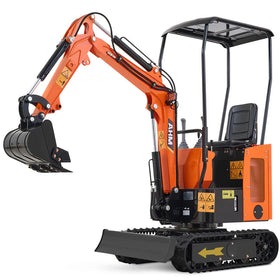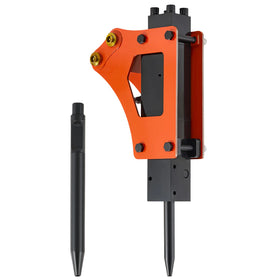Yes, you can mow wet grass when necessary, but it requires proper techniques and equipment to avoid damage to your lawn and mower. While lawn care experts typically recommend waiting for dry conditions, sometimes weather patterns or time constraints make this impossible. This guide covers everything you need to know about safely cutting wet grass.
Why Mowing Wet Grass Is Usually Not Recommended
 Mowing wet grass presents several challenges that make it less than ideal:
Mowing wet grass presents several challenges that make it less than ideal:
- Wet grass blades bend and fold instead of standing upright, resulting in an uneven cut
- Wet clippings clump together, creating unsightly piles on your lawn
- Clumps of wet grass can clog your mower deck, potentially causing rust and damage
- Wet surfaces are slippery, increasing safety risks, especially on slopes
- Cut wet grass is more susceptible to fungal diseases and infections
According to lawn care studies, wet surfaces can reduce traction by up to 50% compared to dry conditions, making slips and falls a serious concern.
That's where a remote control lawn mower really shows its value. With features like all-terrain tracks and remote operation, these innovative machines let you maintain precise control while staying safely away from slippery conditions.
The AHM LM-55 Hybrid remote control lawn mower, for example, combines powerful performance with safety features specifically designed for challenging conditions. Its track system provides superior grip on wet surfaces, while the remote control operation keeps you safely on stable ground.

Best Time to Mow Wet Grass
If you must mow wet grass, timing is crucial:
- Late morning (10 AM - noon) is optimal as morning dew has partially evaporated
- Early afternoon works well if the grass isn't soaking wet
- Avoid early morning when dew is heaviest
- Skip evening mowing as grass needs time to dry before nightfall to prevent fungal growth
Before starting, use a leaf blower to remove as much surface moisture as possible. This simple step significantly improves cutting results and reduces strain on your equipment.
How to Safely Mow Wet Grass: Step-by-Step Guide

Follow these techniques to get the best results when mowing wet grass:
1. Adjust Your Mower Properly
- Raise your cutting height 1/2 inch higher than normal
- Sharpen your mower blades before tackling wet grass
- Consider removing the collection bag if possible to prevent clogging
2. Use the Right Mowing Technique
- Move at a slower pace (about half your normal speed)
- Overlap your passes by one-third instead of the usual quarter
- Consider mowing at a slight angle (approximately 15°) to prevent tire marks
- Make more frequent turns to discharge clippings more evenly
3. Choose the Right Equipment
The type of mower you use matters when cutting wet grass:
- Gas-powered mowers generally handle wet conditions better than electric models
- Mowers with high-lift blades create more suction to lift wet grass
- Track-based mowers provide better traction on slippery surfaces
- Remote-controlled mowers offer safety advantages on slippery slopes
4. Essential Post-Mowing Maintenance
After mowing wet grass, immediate maintenance is crucial:
- Clean the deck thoroughly, paying special attention to corners where wet clippings compact
- Remove all grass clippings from the underside of the mower
- Check and clean the discharge chute
- Allow all components to dry completely before storage
- Apply a light coat of silicone spray to the deck's underside to prevent rust
Wet clippings contain active enzymes that accelerate corrosion on metal surfaces, making prompt cleaning essential for equipment longevity.
Maintenance Matters
After mowing wet grass, you're dealing with more than just surface cleanup.
Wet clippings contain active plant enzymes that can actually accelerate corrosion when left on metal surfaces. That's why immediate cleaning isn't just about preventing clogs - it's about protecting your mower.
When using a remote control lawn mower like the AHM LM-55, pay special attention to these crucial areas:
- Clear the deck immediately after use, focusing on the corners where wet clippings tend to compact
- Check the blade housing seals, as wet conditions can reveal even minor gaps
- Allow all components to dry completely - moisture trapped in bearings can reduce their lifespan by up to 60%
- Inspect track tension after wet mowing, as wet conditions can affect proper tracking
One often-overlooked maintenance tip: apply a thin coat of silicone spray to the underside of your deck after cleaning. This creates a barrier that makes future cleanup easier and helps prevent rust formation.
How to Maintain Your Lawn's Health After Mowing Wet Grass

Understanding the biology of wet grass cutting helps protect your lawn's health. When cut wet, grass cells are actually torn rather than sliced, creating larger wounds that take longer to heal. This is why proper equipment and technique become even more crucial in wet conditions.
Using lighter equipment like a remote control lawn mower helps minimize soil compaction - a critical factor because wet soil can compact up to three times more easily than dry soil. The AHM LM-55's track design distributes weight more evenly than traditional wheels, reducing ground pressure by up to 40%.
Consider these recovery practices after wet mowing:
- Wait until the grass is completely dry before applying any fertilizer
- Monitor for signs of fungal growth in the following days
- Allow slightly longer drying time between mowings to help the grass recover fully
Frequently Asked Questions About Mowing Wet Grass
Can I mow wet grass safely?
Yes, you can mow wet grass when necessary, though it's not ideal. Use a sharp blade, set your mower height 1/2 inch higher than normal, move at about half your usual speed, and clean your equipment thoroughly afterward. The techniques described in this article will help minimize damage to both your lawn and equipment.
Is cutting wet grass with an electric mower safe?
Electric mowers require extra caution in wet conditions. Battery-powered models are safer than corded ones, but both present certain risks. If using an electric mower on damp grass, ensure it has weatherproof components, never mow standing water, and use a GFCI outlet for corded models. For very wet conditions, a gas-powered mower is generally safer and more effective.
How soon after rain can I mow my lawn?
The waiting time depends on rain intensity and your local climate. For light rain, waiting 2-4 hours on a warm, sunny day may be sufficient. After moderate rain, 5-8 hours is typically needed. Heavy downpours often require 24+ hours before soil is firm enough for mowing. The key indicator is whether your footprints leave deep impressions in the lawn – if they do, it's still too wet.
Should I bag clippings when mowing wet grass?
It depends on how wet the grass is. For slightly damp grass, removing the bag can actually help prevent clogging in the discharge chute. For very wet conditions, using the bag might be better to prevent wet clumps from smothering your lawn. However, the bag will fill quickly and require frequent emptying. A side-discharge mower with a properly adjusted deflector often works best in moderately wet conditions.
Is it better to cut wet grass or let it grow too long?
If you're facing extended rainy periods, it's generally better to mow wet grass than to let it become severely overgrown. Excessively tall grass is difficult to cut properly even when dry and can lead to scalping, which stresses your lawn. Using the techniques outlined in this article to safely mow wet grass is preferable to allowing your lawn to become unmanageably long.
Conclusion
You can totally mow wet grass if you need to - just make sure you're smart about it. Gone are the days when this was a major headache, especially now that we have tools like remote control lawn mowers in our corner.
Whether you're sticking with your trusty old mower or stepping up to something like an AHM remote control mower, success comes down to using the right gear the right way. After all, a well-kept lawn doesn't have to mean breaking your back or risking a slip-and-slide adventure on wet grass!







